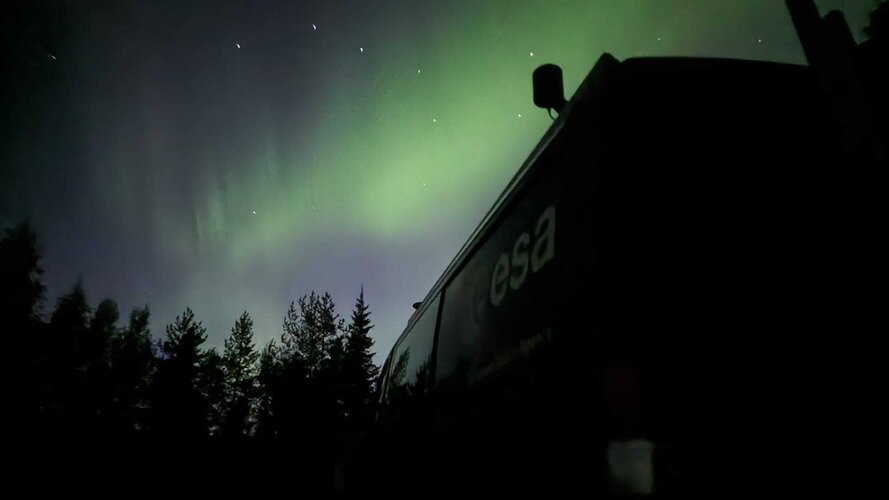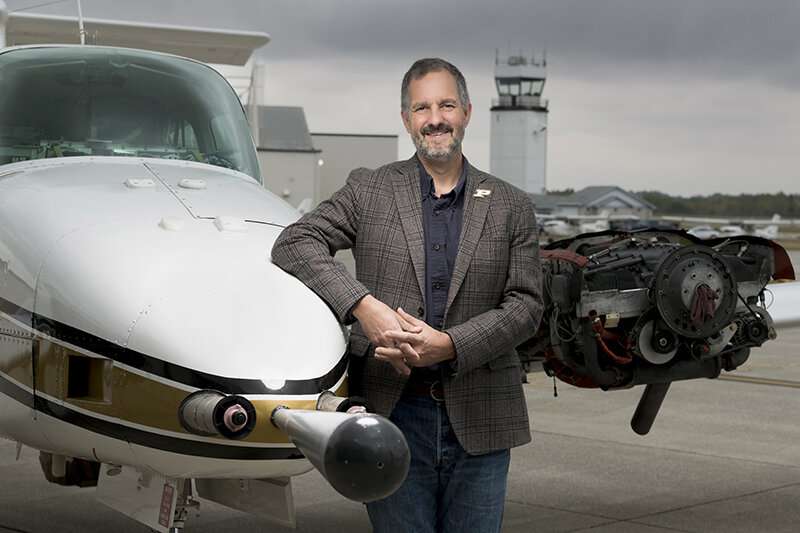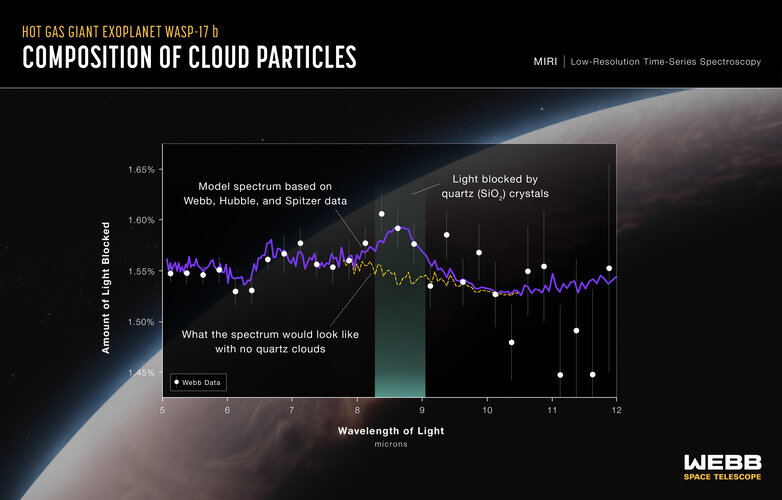
Copernical Team
Lab instrument now on two-billion-mile journey to the metallic asteroid Psyche
 An instrument designed and built by Lawrence Livermore National Laboratory (LLNL) researchers departed Earth last week on a two-billion-mile, nearly six-year journey through space to explore a rare, largely metal asteroid.
The Livermore high-purity germanium (HPGe) gamma-ray sensor is an essential part of a larger gamma-ray spectrometer (GRS) built in collaboration with researchers from Jo
An instrument designed and built by Lawrence Livermore National Laboratory (LLNL) researchers departed Earth last week on a two-billion-mile, nearly six-year journey through space to explore a rare, largely metal asteroid.
The Livermore high-purity germanium (HPGe) gamma-ray sensor is an essential part of a larger gamma-ray spectrometer (GRS) built in collaboration with researchers from Jo Cliffhangers go by the name of 'Stand By' in Mission Ops: Sols 3980-3981
 Earth planning date: Monday, October 16, 2023: We are just at the first steps of the next drilling campaign, as regular readers of this blog will certainly have spotted already. The last plan had the preload test, that little dent we make into the rocks to gauge how both the rock and the rover's arm will react to the pressures and stresses of the drilling. It's a good forecast, but rocks are nat
Earth planning date: Monday, October 16, 2023: We are just at the first steps of the next drilling campaign, as regular readers of this blog will certainly have spotted already. The last plan had the preload test, that little dent we make into the rocks to gauge how both the rock and the rover's arm will react to the pressures and stresses of the drilling. It's a good forecast, but rocks are nat Simulations of 'backwards time travel' can improve scientific experiments
 Physicists have shown that simulating models of hypothetical time travel can solve experimental problems that appear impossible to solve using standard physics.
If gamblers, investors and quantum experimentalists could bend the arrow of time, their advantage would be significantly higher, leading to significantly better outcomes.
Researchers at the University of Cambridge have shown
Physicists have shown that simulating models of hypothetical time travel can solve experimental problems that appear impossible to solve using standard physics.
If gamblers, investors and quantum experimentalists could bend the arrow of time, their advantage would be significantly higher, leading to significantly better outcomes.
Researchers at the University of Cambridge have shown Hypervelocity impact experiments probe the origin of organics on the dwarf planet Ceres
 One of the most exciting findings from NASA's Dawn mission is that Ceres, the largest object in the asteroid belt that lies between Mars and Jupiter, hosts complex organics. The discovery of aliphatic molecules, which consist of carbon and hydrogen chains, in conjunction with evidence that Ceres has abundant water ice and may have been an ocean world, means this dwarf planet might have once harb
One of the most exciting findings from NASA's Dawn mission is that Ceres, the largest object in the asteroid belt that lies between Mars and Jupiter, hosts complex organics. The discovery of aliphatic molecules, which consist of carbon and hydrogen chains, in conjunction with evidence that Ceres has abundant water ice and may have been an ocean world, means this dwarf planet might have once harb Lucy continues approach to Asteroid Dinkinesh for November 1 encounter
 Since NASA's Lucy spacecraft first imaged the asteroid Dinkinesh on Sept. 3, 2023, Lucy has traveled over 33 million miles (54 million km) and is now 4.7 million miles (7.6 million km) away from the small asteroid. However, as Dinkinesh continues on its orbit around the Sun, Lucy still has another almost 16 million miles (25 million km) to travel to its meet-up with the asteroid on Nov. 1.
Since NASA's Lucy spacecraft first imaged the asteroid Dinkinesh on Sept. 3, 2023, Lucy has traveled over 33 million miles (54 million km) and is now 4.7 million miles (7.6 million km) away from the small asteroid. However, as Dinkinesh continues on its orbit around the Sun, Lucy still has another almost 16 million miles (25 million km) to travel to its meet-up with the asteroid on Nov. 1. Satnav test on remote island lab

ESA’s navigation testbed vehicle participated in a campaign organised by Norwegian governmental authorities to assess the impact of jamming and spoofing on satnav systems and test innovative technologies for detection and mitigation.
Signatures of the Space Age: Spacecraft metals left in the wake of humanity's path to the stars

Webb spots quartz crystals in clouds of exoplanet WASP-17b
 Image:
Image:
This is a transmission spectrum of the hot gas giant exoplanet WASP-17 b captured by the NASA/ESA/CSA James Webb Space Telescope's innovative Mid-Infrared Instrument (MIRI) on 12–13 March 2023. It reveals the first evidence for quartz (crystalline silica, SiO2) in the clouds of an exoplanet.
This marks the first time that SiO2 has been identified in an exoplanet, and the first time any specific cloud species has been identified in a transiting exoplanet.
The spectrum was made by measuring the change in brightness of 28 wavelength bands of mid-infrared light as the planet transited the star. Webb observed the WASP-17 system
Unmanned and unbothered: autonomous intelligent oceanic exploration is upon us
 The ocean has always been a force to be reckoned with when it comes to understanding and traversing its seemingly limitless blue waters. Past innovations such as deep-sea submersibles and ocean-observing satellites have helped illuminate some wonders of the ocean though many questions still remain. These questions are closer to being answered thanks to the development of the Intelligent Swift Oc
The ocean has always been a force to be reckoned with when it comes to understanding and traversing its seemingly limitless blue waters. Past innovations such as deep-sea submersibles and ocean-observing satellites have helped illuminate some wonders of the ocean though many questions still remain. These questions are closer to being answered thanks to the development of the Intelligent Swift Oc Monitoring African copper and cobalt mining emissions from space
 Emissions associated with mining operations in Africa's Copperbelt can be quantified from space, according to new research led by the National Center for Atmospheric Research (NCAR). Mining for copper and cobalt in Africa has rapidly increased, the latter in response to growing global demand for electric vehicles, laptops, smartphones, and other devices that rely on lithium-ion batteries, the va
Emissions associated with mining operations in Africa's Copperbelt can be quantified from space, according to new research led by the National Center for Atmospheric Research (NCAR). Mining for copper and cobalt in Africa has rapidly increased, the latter in response to growing global demand for electric vehicles, laptops, smartphones, and other devices that rely on lithium-ion batteries, the va 
































